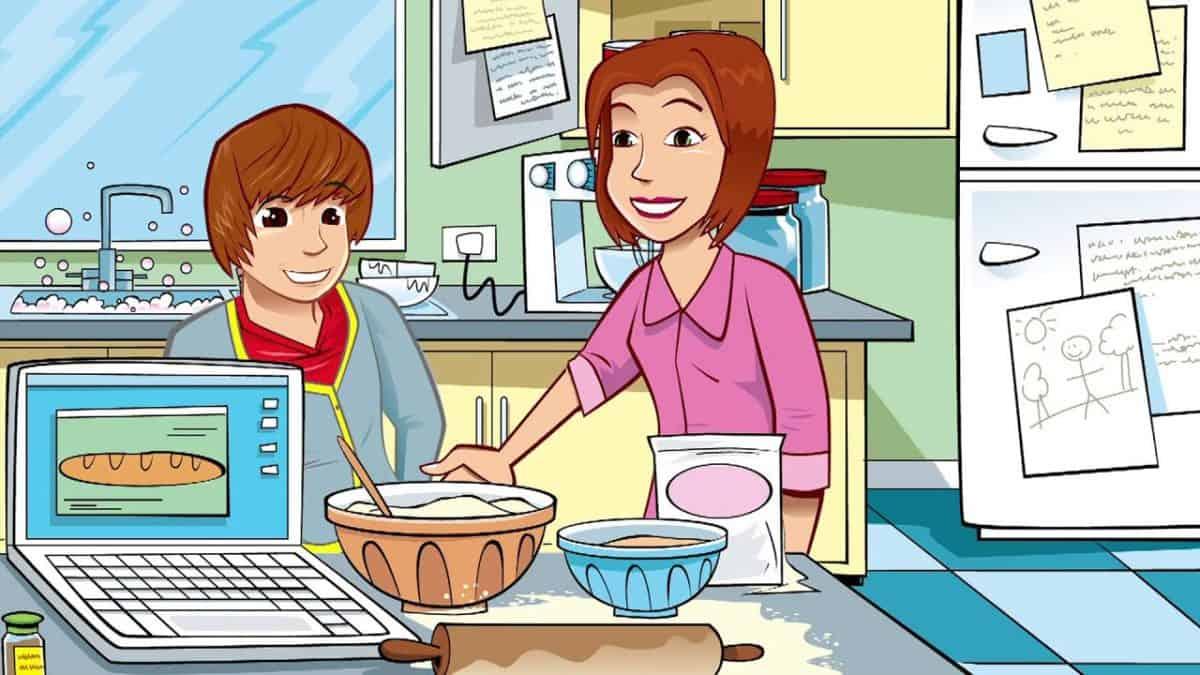To make a loaf of bread, the basic ingredients you need are:
- flour
- yeast (to make the bread rise)
- salt (to add taste and aid proving),
- vinegar (a preservative)
- vegetable fat (to make the loaf lighter and airier and extend its shelf life)
- water
But what do each of these things bring to the party?
Yeast
- Almost all breads today are leavened, which means that a substance has been added to the dough to start fermentation and make it rise. The most popular and widely known leavening ingredient is yeast.
- Yeast is a micro-organism, one of the tiniest forms of life. The air around us is full of thousands of different kinds of yeast. If it is given warm, damp surroundings and starchy or sweet matter, it will start to breed. As the yeast multiplies, it turns starches and sugars to alcohol and produces carbon dioxide gas. It is this gas that adds the air into the dough, and makes it increase in size.
- Yeast used by bakers is called Saccharymosa cereviserae. It was originally a by-product of brewing beer (when the yeast was used for the alcohol, rather than the carbon dioxide, it produced). Today it is cultivated commercially in laboratory conditions, and sold as fresh, compressed or dried yeast.
- Yeast must be mixed with a warm liquid before adding it to flour. If the liquid is too cool, the yeast won’t multiply; if it is too hot (over 43°C), the yeast will be killed.
Protein
- The important protein found in flour is gluten. Gluten gives the dough softness, so that it can expand when the gas bubbles produced by the yeast form. It also gives the dough strength so that the gas bubbles do not burst.
The stages of baking
All mixtures made with yeast are prepared in several distinct stages:
- Ingredients are mixed to make a dough
- The dough is then kneaded to help the protein (gluten) soften and strengthen the dough.
- The dough is left to rise (or ‘prove’) to double its original volume, as the yeast cells multiply and produce carbon dioxide gas. The ‘rising time’ depends on where the dough is kept (double in size in about 1 hour in a warm place, 1–2 hours in a cool place, and up to 12 hours in a refrigerator).
- The dough is then knocked back to remove the large air bubbles produced by the yeast. This ensures a more even texture and a better rise. Large bubbles of gas would make large holes in the finished bread.
- The dough is shaped and may be put in a tin. It is then covered and left to prove, or rise, again. The time this takes will again depend on the temperature and volume of the dough. In a warm place, a large loaf may take 50 minutes to rise, while rolls will take 25 minutes. When proved, the dough will be light, puffy and doubled in size.
- The dough is ready to be baked. A hot oven (230°C) is needed to kill off the yeast cells. The baked bread should be well risen, golden and crisp and should sound hollow when you tap it on the base.
> Visit the Grain Chain Homepage
> Download the audio podcasts for free from iTunes
The Grain Chain
Find out all about bread and baking with George Explores... The Grain Chain
More From The Grain Chain



